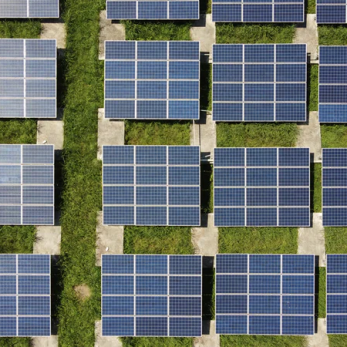Sustainable investments are all the rage. A special form of this type of investment is impact investing. What is this all about, what are the differences between investments in this niche, and what the investment motives are?
What you will learn:
What is impact investing?
Impact investing refers to investments that aim to have a measurable social and ecological impact in addition to the financial return. The money invested should help to solve social, economic, and environmental problems. Broadly speaking, impact investing is a commitment that represents a kind of middle ground between donation and maximizing returns.
The term “impact investing” was first mentioned in 2007. At that time, the Rockefeller Foundation held a meeting for selected investors in Bellagio, Italy. They discussed how social and environmental performance could be better combined with financial returns.
The challenges humanity will be facing in the coming decades are enormous: water scarcity, soil erosion, climate change, loss of biodiversity, poverty, and diseases require great efforts to be overcome. Education, housing, and health care are also needed to create a world worth living in for everyone.
To tackle these challenges, the United Nations formulated 17 Sustainable Development Goals (SDGs) that the global community should achieve by 2030. Today they serve as a benchmark for investments with the broadest possible positive impact, including:
- Education and health
- Clean water
- Affordable and clean energy
- Climate protection
- Combating poverty and hunger
- Peace and justice
How is impact investing different from other investments?
Impact investing falls into the large area of sustainable investments. Nevertheless, there are differences to other investments that are committed to sustainability.
The key difference is that impact investing should ideally have direct and, above all, measurable social and ecological effects.
The positive effects must not only be verifiable but also documented and communicated. As a consequence, this means clear and strict rules:
- Businesses must have a clear intention to make a positive social impact through their business operations.
- Businesses and investors need to quantify and evaluate the goal.
How sustainable is impact investing?
Impact investing goes further than other sustainable investments because it is not about mitigating the negative effects of economic activities. Rather, specific projects and companies get support if they demonstrably promote social improvement.
For impact investing investors, it is not enough to apply the principles of Socially Responsible Investment (SRI) with environmental, social, and corporate governance criteria (ESG approach).
Although classic investments can also create social added value, impact investments are deliberately aimed at developing social and ecological effects. For this purpose, impact targets are explicitly set, and the impact of the investment is measured.
The non-profit organization Global Impact Investing Network (GIIN) put it this way: Impact investments are “investments that are made with the intention of achieving a positive, measurable social and ecological impact in addition to a financial return.” The federal initiative Impact Investing is committed to this and to good communication about the concrete impact.
What are the investment motives of an impact investor?
Investors who decide to use impact-driven capital often have multiple investment motives. Profit maximization is not the priority, although investors still want to earn a reasonable return. Above all, however, they want to achieve something positive in terms of ecology, climate protection, the environment, and society.
The following three points are mentioned most frequently when investors are asked about their motivation to invest sustainably:
- Ethical and social improvements
- Climate protection
- Socially acceptable returns
Institutional investors and so-called family offices are now particularly active in this area. They are primarily wealthy families who have discovered this sector for themselves because they value social returns and positive impact.
How impact investments are measured: important metrics
In order to assess the specific performance of an investment, non-financial key performance indicators are used and evaluated. Most impact investing offerings are still young. Meanwhile, the number of public data and frameworks is increasing.
Scientists and practitioners are constantly working to improve the impact measurement system. The Impact Reporting and Investment Standards (IRIS+) have been providing orientation since 2018. These were developed by the GIIN, the Rockefeller Foundation, the B Lab, and Acumen. This catalogue of metrics lists standardized metrics related to the Sustainable Development Goals (SDGs).
Examples of impact measurement metrics:
- Litres of water saved
- Megawatts of green electricity produced
- Hectares of new organic land in agriculture
- Area of reforested forests
- Kilograms of recycled e-waste
- Number of newly created jobs
- Number of pupils in newly built schools
- Number of mosquito nets distributed
How does impact investing generate returns?
The capital in impact investments flows into real-world projects for sustainable development: school education, wind turbines, social entrepreneurship, or a factory with sustainable products, for example.
As a result, the return for investors is not dependent on the price development on the stock exchange, as is the case with other securities, but on the success of the underlying business plan. This can be put through its paces by investors or fund managers through a detailed investigation — due diligence. Factors such as social or ecological objectives, the experience of the team, and the market prospects also play a role here.
Typical impact investments are, for example, microloans that are geared towards social impact: at more than 30 per cent, they make up the lion’s share of impact-oriented investing. People in poorer regions receive microcredits to finance their independence.
Women in particular — e.g. in India and Bangladesh — are given the opportunity to sell something in their village, such as a light or a charging station, by financing a solar storage system. The repayment morale of these women and their communities is the highest in the world in the financial sector.
Since there is no access to the banking system or the interest rates from local lenders are often in the double-digit range per day, the offer from microfinance institutions on fairer terms is popular with borrowers. The economics professor Muhammad Yunus received the Nobel Peace Prize for the seemingly paradoxical but successful concept of lending money to the poorest.
Impact-oriented investments in infrastructure projects, such as renewable energies, have been growing in recent years. As tangible assets, they generate a comparatively secure and attractive return. Depending on the concept, money can also be made by offering affordable housing, educational and health projects, and ecological agriculture.
Challenges of impact investing
For impact investing to become mainstream, a major challenge must be overcome: standardizing impact measurement so that investors can make informed decisions.
The financial markets provide investors with an infrastructure that allows them to compare financial information. The same tools and resources are not yet available to ethical investors to determine the impact. It is a double challenge. First, it is difficult to determine how an investment has affected outcomes. It can take years for results to appear, and it is hard to prove direct causality.
And there’s another obstacle. It may be even more challenging to standardize the data to enable a fair comparison of impact results between investments.
Transparency is yet another hurdle. When it comes to investing, many people think their only option is to invest money in mutual funds or in a bank-managed portfolio. With this approach, investors have the problem that you never really know where exactly the money ends up. Even in sustainable or socially responsible funds, it is not uncommon for oil companies or junk food producers to be in the portfolio.
Understandably, many investors worry about greenwashing in sustainable investments, which can only be overcome by the openness of investment managers when it comes to sustainable and social impact investing.
Myths and fallacies of impact investing
Even if impact investing is still relatively new as an innovative form of sustainable investment, there are already some myths and false claims.
Three of the most commonly cited misperceptions are:
- No (attractive) return is possible with impact investing.
- Expertise in markets must be available.
- The effect of the invested capital cannot be measured.
These three misconceptions can be quickly refuted.
- Impact investing is by no means at odds with an attractive return. This view is simply outdated and only applied to the first sustainable investments on the market, which first appeared in the late 1990s. An adequate yield is now possible without having to forego positive ecological and social effects.
- Sustainability investments are considered very complicated, and they imply that the investor, therefore, needs expert knowledge. This may be the case with special forms of investment that rely on complex trends or technologies. However, there are a large number of investment products that are very transparent and easy to understand. This includes, for example, mutual funds. In addition, more and more asset managers are offering sustainable products.
- Another frequently cited criticism in connection with impact investing is that the desired effect is not measurable. This statement is incorrect because investors can see from the start what they can achieve with their investment.
An illustrative example of measuring impact is investing in a wind turbine. In this case, the investor learns in detail how many megawatts of green electricity his capital was able to generate.
There are also numerous examples of how success and impact can be measured in the social sphere. Investors recognize the positive effect of creating inclusive jobs by the number of disabled people who are employed as a result of the investment.
Conclusion: what is the outlook for impact investing?
The philosophy of sensible investing can be compared to the philosophy of eating: food serves as a means of survival but can do so much more.
If you only maximized the calorie intake when eating, the goal of simple food intake would be fulfilled: your survival is assured. But food also satisfies other goals, such as socializing while dining together, touching the senses with pleasure, or discovering new recipes, tastes, and cultures. The aim of some diets is also to minimize the environmental impact.
The previously dominant idea that investing should only serve the purpose of financial return seems short-sighted. Looking at food only as a means of absorbing calories would mean an unfortunate degradation. And investing can do so much more.
Most of these metrics focus on output rather than the outcome:
- Instead of measuring the number of bed nets distributed (output), it could measure the number of malaria cases prevented (outcome).
- Instead of the number of newly built schools (output), the increase in the school enrollment rate (outcome) could also be recorded.
However, such data is typically difficult to collect and isolate. For example, many factors can affect how well students get their final grades—not just the number of lessons taught by qualified teachers. It is therefore not always easy to understand to what extent impact investments achieve the intended goals and target groups in the long term.
While some investors take a qualitative approach, others use quantitative metrics. Most determine their impact primarily in the field of action in which they have invested and for which they have set themselves goals. Measuring the impact can be very time consuming and take up part of the return. Therefore, effort and benefit must be weighed.
Not only the positive effect but also the avoidance of negative effects is considered with impact investments. A key principle in this is called DNSH: Do not significantly harm. It means that an ecological investment must not result in significant damage.






